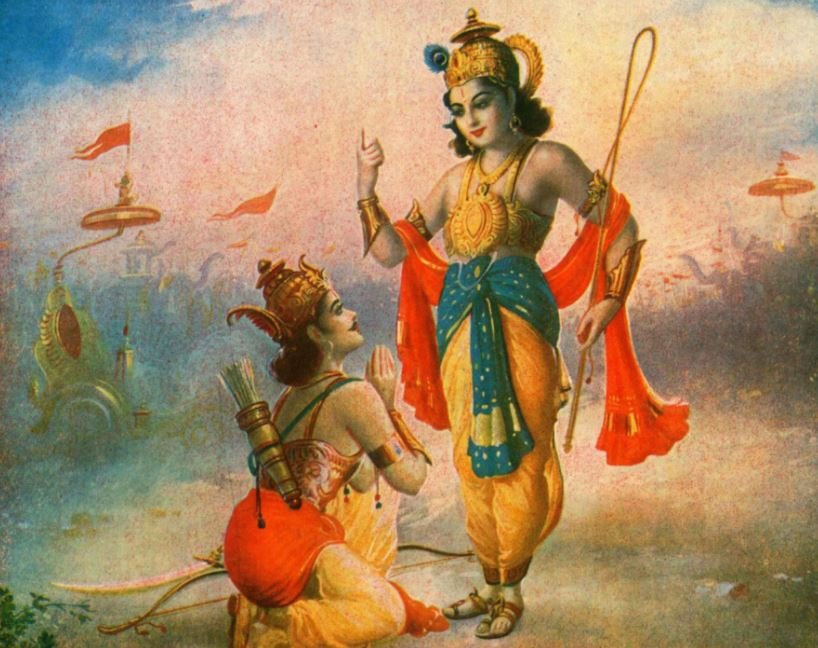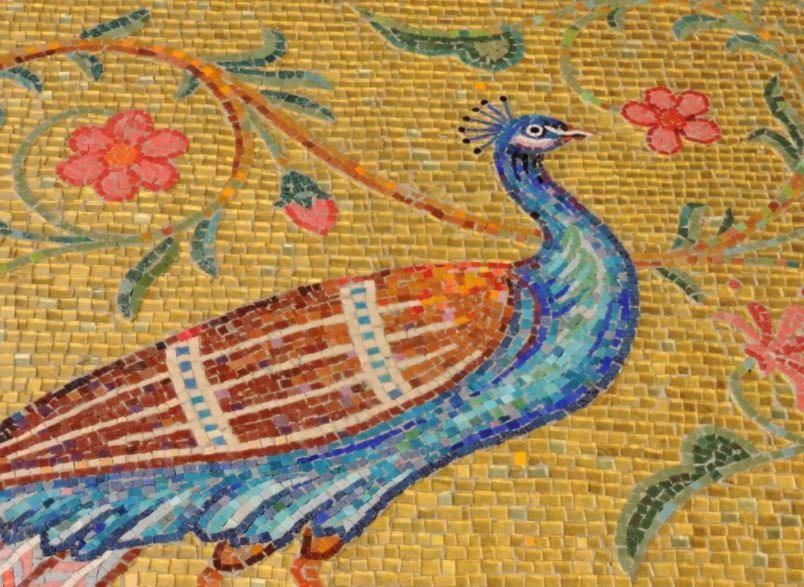Peacock is not just the national bird of India; it holds an immense sentimental and religious significance too. The very mention of this beautiful bird brings to our mind the gorgeous feathers in rich deep hues of violet, green and purple. There is a lot of story and reasoning behind why peacock is the national bird of India. Join me as we explore the mystical story.
Quick Navigation
Reasons why Peacock is the national bird of India
For any object or animal to be made a national symbol, it should satisfy the following aspects:
- Should be available (distributed) throughout the country.
- Should have a religious and cultural relationship with the nation
- Should be easily recognizable even by a common man
- Should impart a formal and decent look when used on governmental publications and imprints
- Should not be confused with any other nation’s symbol
Thus, amongst the birds, Peacock fits all these criteria perfectly. Hence, in 1963, peacock was declared as the National bird of India.
Essay on National Bird Peacock
Do you know that there are only 3 species of the national bird of India, peacock! Yes, they are Indian peafowl, Congo peafowl, and Green peafowl. Among them, unfortunately, only Indian peafowl is present in adequate numbers. Rest two are tagged vulnerable and endangered.
- Peacocks grow their feathers from the age of 3 years.
- Peacocks shed their feathers after mating. To collect their feathers, one need not kill these beautiful birds.
- A peafowl can make 11 different sounds!
- Peacocks do not exist alone. They love to live in groups. A group of peacocks is called a Muster or Party! A family of peacocks is called a bevy.
- Peacock implies a male one, while the female one is called Peahen. Baby peacocks are called peachicks.
- Peacocks can be very aggressive when someone tries to intrude on their habitats. So never play with peacocks in a way that may irritate them.
- Peacocks emit noises in the range of infrasound, that is not perceivable by humans. However, they cry and make big hoots that are often heard by humans.
Why hockey is the national game of India?
Interesting facts about peacock
A crying peacock is considered inauspicious for humans. It is believed that some unfortunate incident might happen when a peacock cries!
- Peacock is not just the national bird of India. Grey peacock is the national bird of Burma.
- Peacocks are found in almost every place in India. Killing or hunting peacocks is a crime as per section 51(1-A) attracts imprisonment which may extend to seven years.
- Peacocks are one of the fastest flying birds on the earth. Their speed ranges around 16kmph.
- Male peacocks are more beautiful than female ones. They attract female ones by displaying their feathers and dancing.
- Around 60 percent of the body length of the peacock is contributed by their feathers. The feathers can be as long as 6 feet!
- Do you know what peacock feathers are called? They are called ‘train’!
- Have you seen a peacock flying? Yes, peacocks can fly high but not very far though.
- The scientific name of the Indian peacock, the national bird of India, is Pavo cristatus.
- When left freely in the wild they live around 10-25 years. Peacocks can live as long as 50 years when taken care of properly.
- On average, the national bird of India Peacock contains 200 elongated feathers!
- A white peacock is not an albino. It is born yellow and turns white at the age of three.
Significance of Peacock in Hinduism
Peacock is the national bird of India as they also hold great religious significance as per Hinduism. Numerous stories had been mentioned in the ancient scriptures of Bharat.
Peacock and Lord Muruga
Lord Muruga uses a peacock as his Vahana (vehicle). The name of Lord Murugan’s peacock is Paravani. According to Hindu legends, the peacock is a demon named Surapadma. Once he provoked the Son of Lord Shiva and Goddess Parvati, Muruga, or Subramanya for a war. In the war, he realized the power of Muruga and became a tree. He starts praying for pardon. Then Lord Muruga breaks the tree into two. One part is the peacock, his vehicle. The other part is the rooster, which he carries on his flag. The rooster is no one else than the wife of the Demon Surapadman.
Peacock feathers are also considered as Goddess Lakshmi. Hence, many people who keep the feathers at home take care that the eye never gets dusted or twisted for inviting prosperity into homes.

Peacock and Goddess Saraswati
Peacock is also the vehicle of Goddess Saraswati. This Goddess of Education and Knowledge is popularly known as Hamsavahini. But she also rides on a peacock. A peacock is a symbol of beauty and pride. The Goddess riding on a peacock signifies that one should not be overtaken by the pride of beauty which is temporary but should focus on knowledge that is ever-lasting.
Peacock and Lord Indra
According to this tale, peacocks were once pale and colorless. Once while Lord Indra was waging a war with demons, peacocks helped him to hide behind their feathers and kill the demons. Satisfied with their help, Lord Indra turned the pale peacocks into beautiful colored ones that we see now. Peacock is also the vehicle of Lord Brahma.
Why does Lord Srikrishna wear a peacock feather?
There are many reasons why Lord Sri Krishna, one of the dashavtars of Lord Vishnu, wears peacock feathers.
According to one story, once Lord Srikrishna was playing his charming flute with the most beautiful tunes in a forest. All the peacocks in that forest started to listen to the melodious tunes. Soon they all gathered around Sri Krishna and lost themselves in the melody. They started dancing by opening their feathers and danced till they were exhausted and filled with immense happiness. They offered their feathers to the Lord as a token of gratitude, Guru Dakshina, for making them happy with his unmatchable melodious tunes. Lord Sri Krishna who accepts anything that one gives with love, immediately accepted the feather and adorned them on his Kirita.
In other reasoning, the colors of the peacock are deep, rich, and enchanting. They mesmerize and charm anyone. It signifies Maya. Sri Krishna wearing them on his head implies that one should not be consumed by Maya but should focus on Him and perform their actions leaving the results to Him.

Significance of Peacock feathers in Astrology, Vaastu, and FengShui
Peacock is more than the national bird of India. Many beliefs and practices exist that are in relation to this beautiful bird.
It is a common sight that many of us keep peacock feathers at home. According to astrology, peacock feathers are said to remove doshas ( bad effects and bad energies).
Peacocks eat snakes, thus having peacock feathers in the pooja room is considered to ward off the ill effects caused by the Rahu planet(symbolized as Snake headed in astrology).
Feng Shui explains that the rich and geometric colors of peacock feathers remove negative energies. The very sight of them releases our tensions. Vaastu suggests that keeping an idol of Lord Ganesha and peacock feathers in the living room entrance attracts prosperity and fortune.
- Fengshui considers peacocks to be protectors from evil energies.
- Peacock feathers are also kept under the pillows of infants to remove the Drishti dosha.
- When kept in money-safes they are believed to attract fortune into the house.
- It is a common belief that keeping peacock feathers in books draws more knowledge.
- Peacock feathers contain traces of insect repellents. This justifies why peacock feathers are kept at many Indian homes. Villages use them to ward off insects and evil energies too.
- A picture of a peacock in the bedroom is trusted to improve the bond between a wife and husband.
- If you have seen anyone adorning the living spaces of workspaces with peacock wall décor, understand that they hold immense Vastu and Fengshui significance too.
What does the national bird of India peacock symbolize?
Peacocks are synonymous with beauty and richness. They symbolize status and wealth. Some cultures even consider them as earthly versions of the Phoenix. Their multiple ‘eyes’ in the feathers teach us that we should see all the beautiful things in the world with brilliance.
Significance of Peacock in Buddhism
Buddhism considers peacocks with utmost respect and devotion. Maha Mayuri, the Great Goddess according to Buddhism is none other than a peacock. She is believed to protect her devotees from poisoning and snake bites. She is considered as Queen of the secret sciences’ and the ‘Godmother of Buddha’ in Mahayana Buddhism.
Significance of Peacock in Indian arts
Indian arts gave enough emphasis to peacock in all possible forms.
- Dance: Classical dances of India like Bharatanatyam have distinct mudras that depict peacocks and their dance.
- Motifs: Just like the national flower of India – Lotus motifs, one cannot imagine Indian art without peacock motifs. You can find these motifs of the national bird of India almost everywhere ranging from personal jewelry, paintings, sarees, home décor, gift items, and rangolis.

Why do peacock dance before rains?
Peacocks are prominent for their dance. The very sight of clouds and cool breeze adds to their happiness and they start dancing displaying their jaw-dropping feathers. It is a norm in India to call one who dances fabulously as Natya Mayuri, where Mayuri is the Indian name for peacock.
Hopefully, we answered your doubt, Why the peacock is the national bird of India. Due to all these reasons that are culturally, socially, and spiritually intertwined, the peacock is made the national bird of India.
Swetha is a Content Specialist, LinkedIn Branding and B2B Marketing Consultant. When she is not in the world of B2B, she researches the roots and beauty of Indian Culture and Traditions. She is the author of the book: 365 Days 365 Posts – The Guide to LinkedIn Personal Branding, available exclusively on Amazon. Connect with her on LinkedIn.

